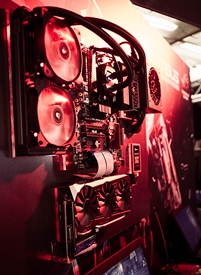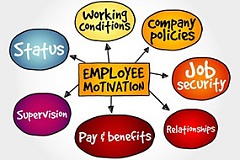 Canada is currently at the forefront of the artificial intelligence (AI) movement, and all indications are it is set to stay that way. The Invest in Ontario website claims modern AI was “pioneered” in the province, leading to the provincial government actively supporting the shift towards a knowledge-based economy.
Canada is currently at the forefront of the artificial intelligence (AI) movement, and all indications are it is set to stay that way. The Invest in Ontario website claims modern AI was “pioneered” in the province, leading to the provincial government actively supporting the shift towards a knowledge-based economy.
Early in 2017, PM Justin Trudeau announced the allocation of $125 million in funding for AI research and development. Since then, business people have begun to realize the full potential impact of AI on everything we do. Indications of this include:
- New startups now accept they will need some level of understanding of AI,
- Canadian universities are preparing for an influx of students needing to study foundational skills for AI, such as computer science and analytics, and
- Venture capitalists such as Real Venture, Cycle Capital Management, and Relay Venture are investing heavily in AI initiatives, especially in Toronto, Montreal, and Vancouver.
With the government actively leading the charge, technology – and AI in particular – is starting to look like part of the scenery.
How AI Impacts SMEs
[quotesright One of the most inspiring factors of AI is the way it can be used across a broad spectrum of industries.[/quotesright] Ranging from using neural networks to predict credit behaviors, to boosting direct marketing and improved purchasing using big data insights, AI is changing business dramatically. A review of the Vector Institute’s portfolio shows it includes companies in banking, retail, media, finance, construction, manufacturing, and technology.
This means there’s a lot of funding available for anything related to AI, as evidenced by the investment of more than $1 billion in 550 Canadian startups between June 2016 and May 2017.
[quotesright]For business owners wanting to take advantage of these opportunities, taking a good, long look at your products and services is the first step. [/quotesright] This should enable you to identify ways to leverage data and AI technology for improvements and new offerings.
Implementing AI in Your Business
Data remains the primary driver of innovation and advancements in AI and Deep Learning (DL), which is a specific type of machine learning pioneered at the University of Toronto. DL focuses narrowly on a subset of tools and techniques, and is applied to solve problems requiring deep, logical thought processes. For any business to scratch the surface of AI, they need access to data comprehensive enough to train the neural networks. They also need to have the right hardware and software to process the data, and that usually includes employing the right talent to manage it.
[quotesright]All that aside, here’s how the “average” small to medium sized company can tip their toe in the waters of AI and find ways to start utilizing it. [/quotesright] Hint: It doesn’t mean changing your line of work.
- Look for areas that require improvement. Few businesses can truly claim they have no areas that need improvement. Could you benefit from increased productivity? How strong is your competitive advantage, really? Do your marketing efforts pay off well enough?
- Use the “if only” test. Consider each question in the context of “if only.” If only you could do what, you could double your turnover. If only your product was as good as (or better than) X’s, you’d take a bigger share of the market. What would it take to make those statements true? Even if the answer to your “if only” is funding, as in “if only we had more marketing budget,” the incorporation of AI tech into your operations can help you achieve it.
When you do this exercise, don’t be limited by the possible. [quotesright]Reach for the impossible, because you never know when that will become entirely doable[/quotesright]. A facilitated brain storming session with a qualified executive business coach can help you identify areas where you could plug in some AI.
Because AI is able to crunch the numbers at lightning speed, it’s exceptionally good at generating insights based on real-time data. For instance, what would it take to make your product better than the competition’s? Perhaps the answer is customer insights, which would improve your ability to deliver or perform against expectations?
The Netradyne Example
An example of this is Netradyne, a U.S.-based provider of commercial vehicle technology, which is combining AI with the use of video to identify causes of events affecting the driving of commercial fleet vehicles.
With an objective to reduce risk in fleet operations, many companies are adopting video recording methods to identify bad driving behaviors and the circumstances surrounding collisions and other events. Instead of a reactive system that kicks in only when triggered by an incident as do most companies, they put AI to work. [quotesright]Netradyne uses advanced video scanning of the visual field to produce detailed contextual data continually during the trip to help avoid accidents. [/quotesright]
Combined with information about common factors leading up to an event, deep learning can enable the AI to proactively make decisions that can help to avoid incidents before they occur. With a vision-based system that monitors the roadway with three cameras and can also read road signs and identify traffic lights, the program can make very accurate assessments of what is likely to happen, and this both improves productivity and reduces the risk of incidents for commercial fleets.
Making it Work for You
Some of the ways AI could be used in your business include speech recognition, visual field analysis as in the Netradyne example, predictive analytics (widely used in marketing at present), business intelligence, the independent operation of equipment and machinery, and detection of fraud. [quotesright]Why not consider partnering with a software startup to create an application for your business? It could be a win-win relationship all round! [/quotesright]














